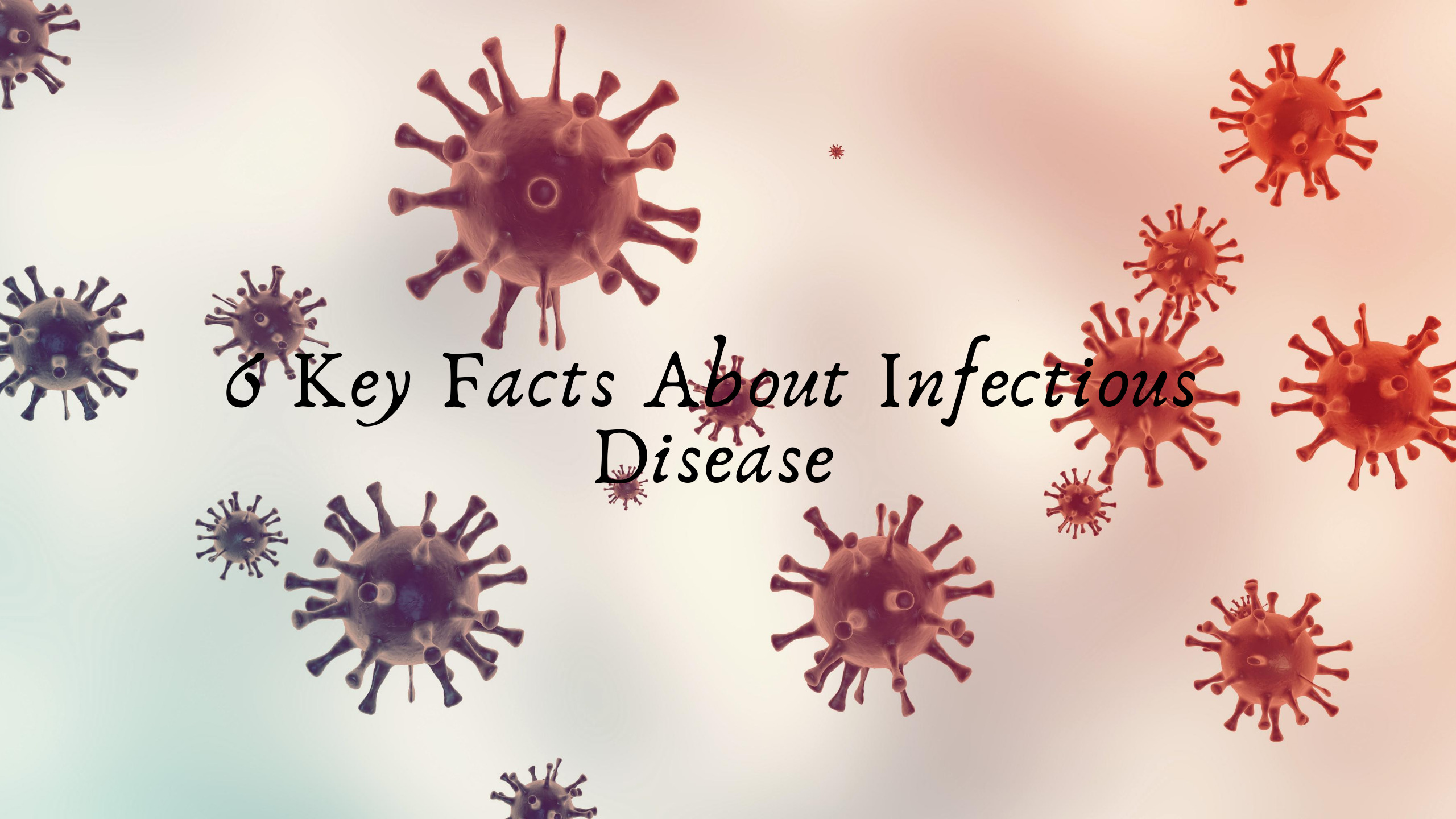6 Key Facts About Infectious Disease
Infectious diseases are a hot topic on everyone’s mind recently. With the outbreak of the novel virus COVID-19, infection is almost the only topic in the media. Infectious disease is caused by microscopic organisms known as pathogens that enter the body.
According to WebMD, once inside the body, these pathogens multiply and create havoc. The havoc can range from mild symptoms to deadly conditions. The medical community has made great progress in controlling and eradicating many known diseases. But we remain at risk to a wide variety of new and mutated strains of organisms. In the following paragraphs, I will explain some of the key facts related to infectious diseases.
Types of Infections
Some infections only affect one organ or system of the body, whereas others affect the entire body as a whole. Examples of infections that only affect certain organs or systems are known as localized infections. Some familiar types of this kind of infection are tuberculosis which affects the respiratory system, urinary tract infection which affects the urinary system, and endocarditis which affects the heart just to name a few.
Some commonly known infections that affect the entire body are HIV, malaria, and measles. Some localized infections can be extremely serious if they affect vital organs such as the heart, brain, or liver. The outcome of the infection depends on the severity of the infectious agent, the amount of the reproduction of the agent, and the body’s immune response
(https://www.cdc.gov/csels/dsepd/ss1978/lesson1/section10.html).
[content-egg module=Flickr template=justified_gallery]
Modes of Transmission
One of the most common ways a pathogen can enter the body is through the skin. A pathogen can enter through cuts, scrapes, punctures, burns, surgery, or even hair follicles. Some pathogens can be inhaled through the nose and/or mouth. This type of pathogen is called an airborne disease
(https://www.cdc.gov/csels/dsepd/ss1978/lesson1/section10.html).
This type of disease can spread from people coughing, sneezing, nose discharge, or spitting. Other pathogens can be ingested from spoiled food or contaminated water. In some instances, the pathogen is transmitted by a bit from a carrier such as an insect.
Mosquitos are known to cause malaria and ticks are known to transmit Lyme disease and Rocky Mountain spotted fever. Lastly, certain diseases can be transmitted during sexual contact and from mothers to babies from the placenta and birth canal.
Surveillance
Surveillance plays a key role in fighting against infectious diseases
(https://www.ncbi.nlm.nih.gov/books/NBK11770/).
Surveillance is the process where doctors, healthcare professionals, scientists, and public health officials gather information pertaining to the disease. This information consists of communicable disease information, outbreaks, a new or mutated disease that is present in their respective community. Those professionals have the responsibility to use that information and develop treatments to help control infectious diseases.
Prevention
According to the World Health Organization, prevention is a factor that everyone has the responsibility to control. Some simple steps can be taken by individuals to prevent disease. Some of these steps are handwashing, wearing face masks when ill, stay home away from others when sick, and respiratory etiquette to name a few.
Doctors and healthcare professionals also have a responsibility to provide information and preventative measures for their patients. Examples of this would be providing education for patients on how to care for infection and disease and ways to prevent the spread of those conditions. Another example is to make patients aware of vaccinations and provide them as needed. Modern vaccinations are among the most effective means of preventing disease.
Public health measures are also a big player in the prevention of infection and disease. Clean water, sewage treatment, sanitary handling of food processing is extremely important in infection prevention.
[content-egg module=Pixabay template=justified_gallery]
Treatment
Another key fact in preventing serious outcomes and the spread of infectious diseases is treatment. Developments of antibiotics and antimicrobials have played an important part in treating and preventing infectious diseases.
Another important factor of treatment is the proper treatment in a timely manner. Prompt initiation of the correct antibiotics plays a key role in the outcome of the infection. Also, doctors must prescribe antibiotics carefully. The more antibiotics are antivirals are used when not absolutely warranted the more likely antibiotic-resistant strains of infection will emerge. Continued research and development are also needed for continued treatment of ever-evolving infections.
Antibiotic Resistance
The Mayo Clinic reports that antibiotic resistance occurs when the pathogen that causes the infection to develop the ability to defeat the medication that is designed to kill them. Which means the infection will continue to grow. Infections that become antibiotic-resistant are almost impossible to treat.
If you require antibiotics it’s your responsibility to take them Exactly as prescribed, for the duration as prescribed. Do not stop taking them even though you feel better or take leftover antibiotics that someone else did not complete. These six infectious disease fax facts can help you live a healthier life.
[content-egg module=Youtube template=tile]



